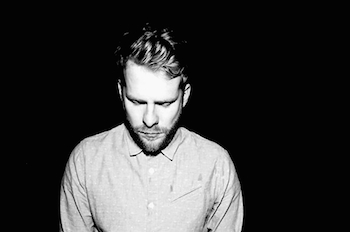A bridge is a very useful section to include in your song, with at least five good reasons for its existence.
_____________
Discover the 11 secrets that pro songwriters have known for decades. “The Essential Secrets of Songwriting” eBook Bundle is being used by thousands of songwriters to take their music to a new level of excellence. Now with a new FREE eBook. Read more…
______________
 Many songwriters deal with the form of a song without really thinking much about it, and that may describe you as well. If you find something catchy and “hooky” that will serve as a good chorus, you make the assumption that you’ll also be writing a verse to precede it. And you’re often happy to let that and any other decisions regarding design evolve as part of the songwriting process.
Many songwriters deal with the form of a song without really thinking much about it, and that may describe you as well. If you find something catchy and “hooky” that will serve as a good chorus, you make the assumption that you’ll also be writing a verse to precede it. And you’re often happy to let that and any other decisions regarding design evolve as part of the songwriting process.
Whether you call a section a bridge or a chorus may be tricky if a song is comprised of two sections: the verse, and then… that other section. The Who’s “Pinball Wizard“, for example, gets considerable discussion over whether it’s a verse and chorus or a verse and bridge.
But labelling something as a bridge becomes easier if a song has a clear verse and chorus, and then one other section, as you find in “I Want to Hold Your Hand” (The Beatles), and Alex Clare’s “Where Is The Love.” It typically shows up after the second chorus, just before the final chorus repeats.
But that still doesn’t answer the question, why should you use a bridge in your song? Here are some reasons a bridge would be a welcome addition to a song:
- To elaborate or complete a lyric. Lyrics in a bridge section usually end the story. In other words, the verses will describe a story or situation, the chorus will emote about it, and the bridge will offer that last bit of detail needed to make the entire story complete.
- To lengthen a song. If a couple of verses and choruses doesn’t seem to be enough, a bridge will give you a little extra mileage. And this is where you’ll often see instrumental bridges.
- To avoid song boredom. If moving back and forth between verse and chorus seems a bit repetitious, a bridge can avoid the problem because it usually comes with its own melody, chords and lyrics that differ from everything else in the song.
- To increase the emotional content of a song. A bridge can take a song that needs more emotional power, and give it the passion that might be lacking.
- To allow the chords to move into the opposite mode. A song in a major key can sometimes benefit from exploring the minor side of life as a way of presenting a more complete musical journey. That’s why you see so many major key songs start their bridge on a minor chord, like “I Want to Hold Your hand.”
Song bridges are often called the “middle eight”, referring to the number of bars of music that it usually lasts. Eight bars isn’t a long time, though there is no reason to limit it to eight. But even if you decide that it’s going to be longer, you should be cautious about wandering too far afield in a bridge. For most song bridges, you should think of the first half of it as being an interesting diversion into a different key area, and then use the final half of the bridge to get back to the original key.
______________
 Written by Gary Ewer. Follow on Twitter.
Written by Gary Ewer. Follow on Twitter.
“The Essential Secrets of Songwriting” eBook Bundle looks at songwriting from every angle, and has been used by thousands of songwriters. How to use chords, write melodies, and craft winning lyrics. $95.70 $37.00 (and you’ll receive a FREE copy of “Hooks and Riffs: How They Grab Attention, Make Songs Memorable, and Build Your Fan Base”










Very detailed read personally I call them a chorus
http://project2wo.blogspot.com/